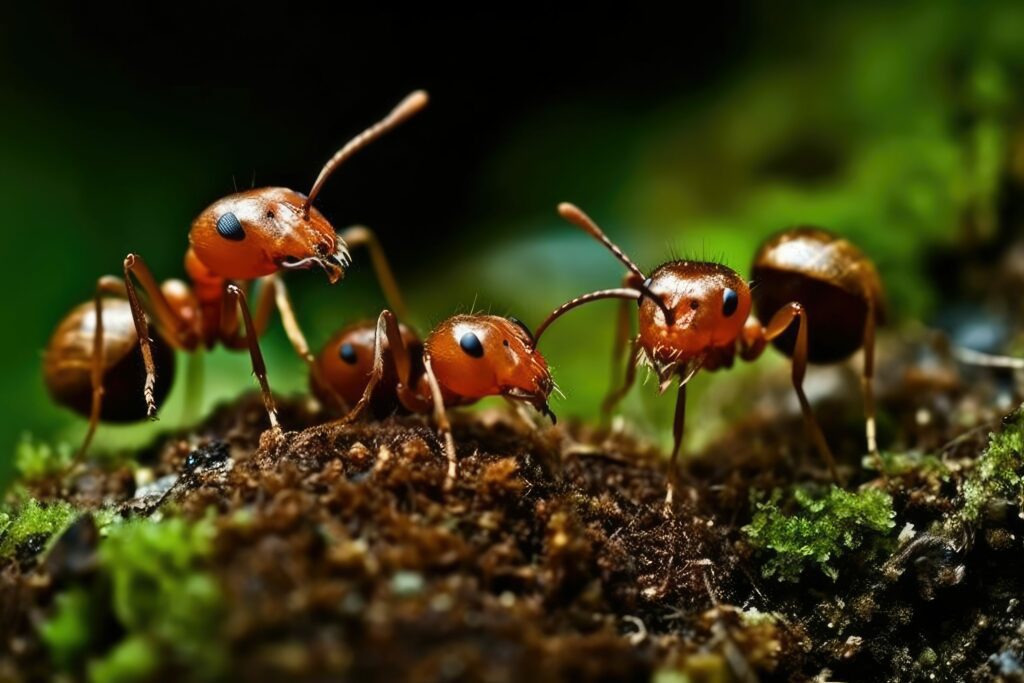Ant infestations are a common issue for homeowners in Edmonton, where the climate and urban environment provide an ideal habitat for these persistent pests. Understanding the causes, types of ants, and effective management strategies is crucial for dealing with infestations. This blog post delves into the specifics of ant infestations in Edmonton, offering a comprehensive guide to identifying, preventing, and managing these unwelcome visitors.
Types of Ants in Edmonton
Edmonton is home to several species of ants, each with unique behaviors and nesting preferences. The most common types include:
- Pavement Ants (Tetramorium caespitum):
- Appearance: Small, brown to black ants with parallel lines on their head and thorax.
- Habitat: Often found nesting under sidewalks, driveways, and building foundations.
- Behavior: Pavement ants are known for forming large colonies and can enter homes in search of food.
- Carpenter Ants (Camponotus spp.):
- Appearance: Larger ants, usually black or dark brown.
- Habitat: Prefer damp, decaying wood, and can cause structural damage if they establish a nest inside a home.
- Behavior: Carpenter ants do not eat wood but excavate it to create their nests, leading to noticeable sawdust piles.
- Odorous House Ants (Tapinoma sessile):
- Appearance: Small, dark brown or black ants.
- Habitat: Nest in a variety of locations, including wall voids, under floors, and outdoors in soil.
- Behavior: Emit a distinctive, rotten coconut-like odor when crushed.
Causes of Ant Infestations
Several factors contribute to ant infestations in Edmonton, including:
- Climate: Edmonton’s seasonal temperature variations create conditions that drive ants indoors during colder months and out into the open during warmer periods.
- Food Sources: Ants are attracted to readily available food sources. Unsealed food, crumbs, and sugary substances can lure ants into homes.
- Water: Like all living creatures, ants need water to survive. Leaky pipes, standing water, and high humidity levels can attract ants.
- Nesting Sites: Cracks in foundations, gaps around windows and doors, and decaying wood provide ideal nesting sites for ants.
Identifying an Ant Infestation
Early identification of an ant infestation is key to effective management. Signs of an infestation include:
- Visible Ant Trails: Ants often follow specific paths to and from their nest. Trails of ants, especially in kitchens or near food sources, indicate an infestation.
- Sawdust Piles: In the case of carpenter ants, finding small piles of sawdust (frass) is a sign they are nesting within wooden structures.
- Nests: Outdoors, nests may appear as small mounds of dirt or sand. Indoors, nests can be harder to detect but may be found in wall voids, under floors, or behind appliances.
- Damaged Wood: Carpenter ants can cause significant damage to wooden structures, which may manifest as hollow-sounding wood or weakened structural integrity.

Preventing Ant Infestations
Prevention is the first line of defense against ant infestations. Here are some strategies to keep ants at bay:
- Seal Entry Points: Inspect your home for cracks and gaps around windows, doors, and foundations. Seal these entry points with caulk or weatherstripping to prevent ants from entering.
- Maintain Cleanliness: Keep your home clean and free of food debris. Store food in airtight containers, wipe down surfaces, and regularly dispose of garbage.
- Manage Moisture: Fix leaky pipes, ensure proper drainage, and use dehumidifiers in damp areas to reduce moisture levels.
- Outdoor Maintenance: Keep vegetation trimmed away from your home, remove decaying wood, and maintain a clean yard to reduce outdoor nesting sites.
Managing Ant Infestations
If an ant infestation occurs despite preventive measures, effective management strategies are essential:
- Baiting: Ant baits are a common and effective method for controlling ant populations. Place baits near ant trails and nests, allowing ants to carry the poison back to the colony.
- Insecticidal Sprays: Use sprays specifically designed for ants to target nests and trails. Be cautious with chemical use, especially around children and pets.
- Professional Pest Control: For severe infestations or difficult-to-reach nests, hiring a professional pest control service may be necessary. Professionals can identify the ant species, locate nests, and apply targeted treatments.
- Natural Remedies: Diatomaceous earth, essential oils, and vinegar are natural alternatives that can help repel and kill ants. These methods are less toxic and can be effective for minor infestations.
Understanding the types of ants, causes of infestations, and effective prevention and management strategies is crucial for homeowners in Edmonton. By staying vigilant and proactive, you can protect your home from these persistent pests. Remember, early detection and prompt action are key to keeping ant infestations under control.

